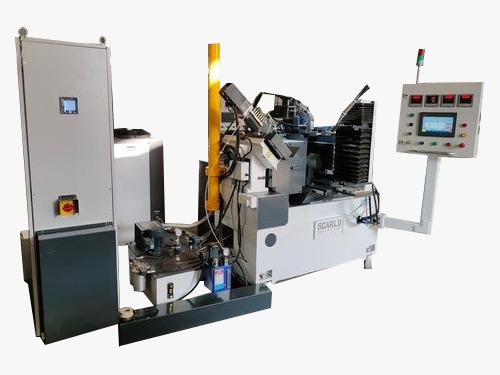


Centerless Grinding Machine for Drying

Introduction
The Centerless Grinding Machine for Drying is a specialized industrial machine designed for precision surface finishing without the need for centering the workpiece. It is crucial in processes where achieving a dry, smooth, and burr-free surface is necessary, improving overall manufacturing quality and efficiency.
Application Area
-
Textile machinery parts manufacturing
-
Medical device production
-
Automotive and aerospace industries
-
Electronics and appliance components
-
Printing rollers and cylinders
Uses Material and Features
Materials Used:
-
High-grade stainless steel
-
Heat-treated alloy steel
Key Features:
-
Precise, uniform surface finishing
-
Continuous feed for high productivity
-
Easy setup with minimal adjustments
-
Automatic lubrication and cooling systems
-
Energy-efficient motor and robust construction
-
Compact design for space-saving
Benefits
-
Achieves consistent, high-quality finishes without water or coolants
-
Reduces downtime and maintenance costs
-
Enhances product longevity and performance
-
Minimizes wastage with precision grinding
-
User-friendly operation with minimal manual intervention
-
Suitable for mass production environments
Conclusion
The Centerless Grinding Machine for Drying is a vital solution for industries requiring efficient, high-speed, and moisture-free surface finishing. With durable construction, precision performance, and eco-friendly operation, it serves as a dependable investment for modern manufacturing needs.
FAQs
Q1: What materials can be processed with a centerless grinding machine for drying?
A: Stainless steel, alloy steel, aluminum, and specialized dry-surface materials.
Q2: Does it require water or coolant during operation?
A: No, it is specifically designed for dry grinding applications.
Q3: Is it suitable for small components?
A: Yes, it can handle a variety of sizes, from small pins to large shafts.
Q4: How does it benefit manufacturing?
A: It ensures better surface finish, reduced contamination, and faster production cycles.
Q5: What industries most commonly use this machine?
A: Automotive, aerospace, electronics, textile machinery, and food processing industries.
Tag list
Filter Using Product Tags



